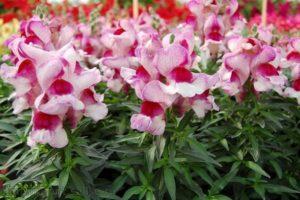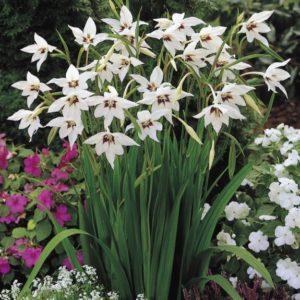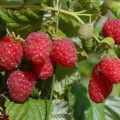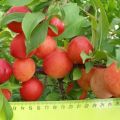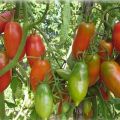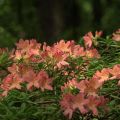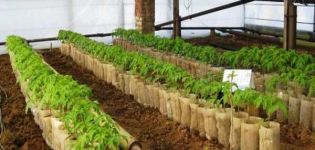Description of perennial flowers for Siberia, selection criteria and growing rules
When choosing perennial flowers for growing in Siberia, they first of all pay attention to the plant's resistance to frost. Crops should have a strong root system and be unpretentious to scarce northern soils. Despite the difficult climatic conditions of Siberia, there is a fairly extensive selection of perennial plants that have been cultivated in this region for years. The main thing is to properly prepare the plants for the cold season and provide competent care.
Features of growing perennial flowers in Siberia
If earlier Siberian gardeners limited themselves to growing annual flowers on their plots, today thanks to the work of breeders it has become possible to plant perennial representatives in the garden. Before deciding on suitable crops, they study the criteria that flowers must meet:
- Strong roots that can overwinter in the ground without problems.
- Resistance to returnable spring frosts.
- Short growing and flowering periods.
- The ability to resist fungal diseases.
Suitable perennials for northern regions
In the list of flowers suitable for Siberia, there are both undersized and tall representatives. Skillfully combining crops of different heights, the gardener creates an attractive flower bed on his site.
Chrysanthemum
In the group of Korean chrysanthemums, suitable for growing in Siberia, there are plants with different flowering periods, heights, and color of petals. The flowers themselves are both tubular and reed in shape. Conventionally, all chrysanthemums can be divided into small-flowered (up to 10 cm) and large-flowered (over 10 cm in diameter). Their height ranges from 30 cm to 1 meter.
Among the most popular varieties are:
- Malchish-Kibalchish. It belongs to the border varieties, its height does not exceed 30 cm, and the diameter of the bush is about 55-60 cm. Lush bushes are covered with non-double inflorescences of a pinkish-lilac shade. The variety blooms in the last days of July and pleases with a decorative appearance for a month.
- Amber. A dense bush of the variety stretches up to 50 cm in height. It is characterized by double inflorescences up to 7 cm in diameter, a bright yellow shade.
- Orange sunset. Tall representative of the Korean chrysanthemum. The plant has a height of about 75 cm, double inflorescences of a reddish-brown color.
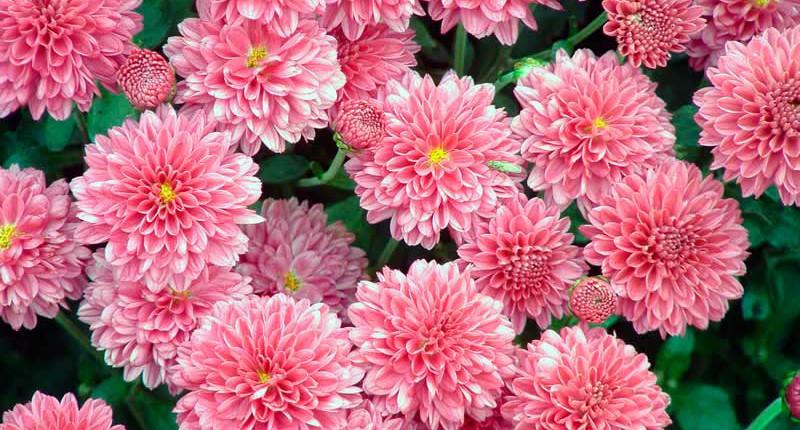
Lumbago (sleep-grass)
The plant belongs to the Buttercup family, the natural habitat is the countries of North Europe and America. In many regions, the flower is listed in the Red Book.The culture does not exceed 20 cm in height and is characterized by a powerful vertical rhizome that can withstand frosty Siberian winters without problems.
First, flower buds appear from the ground, and only after them leaves. After blooming, the buds resemble bells in shape, a little later they look like stars. The petals are slightly pubescent, colored blue or purple. Experienced gardeners recommend growing seedlings from seeds at home for seedlings and then transferring them to open ground.
Siberian Kandyk
The homeland of the plant is considered to be Southern Siberia and Mongolia, the culture belongs to the Bulbous family. The height does not exceed 35 cm, the green leaf plates of the Siberian kandyk are covered with red-brown spots. The flowers of the plant are drooping, about 6-7 cm in diameter. According to the description, the buds of the culture resemble cyclamen. One of the earliest representatives that bloom in the gardens of Siberian gardeners 20-25 days after the snow melts. The flowering period lasts about 2 weeks.
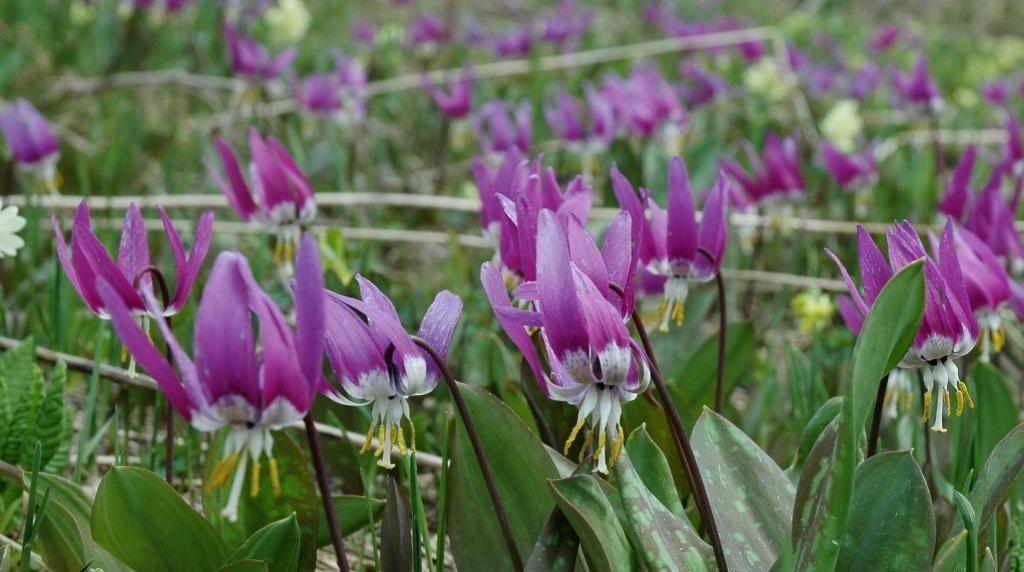
Rudbeckia
A representative of the Astrov family, found in the prairies of North America in natural conditions. It is characterized by simple or branched shoots with a height of 50 cm to 2 meters. The leaf plates have an oval or ovoid shape and a length of 5 to 15 cm. The diameter of the rudbeckia baskets is about 15 cm, the color of which is mainly yellow. Basically, the plant is grown by sowing seeds for seedlings, but the method of dividing the rhizome of an adult flower is also used.
Hyacinths
Hyacinths belong to the Asparagus family and belong to the earliest spring flowers. A variety of shades allows you to create harmonious compositions on flower beds - there are representatives with pink, yellow, blue, red tints. Hyacinths are among the most capricious plants that require a special soil composition. Flowers react negatively to excess moisture and lack of adequate lighting.

Muscari
Like hyacinths, muscari belongs to bulbous plants, therefore, growing a flower in a Siberian climate presents certain difficulties. For Siberia, varieties are selected that begin to bloom in June, others simply cannot stand the cold spring and will die. The main color of the inflorescences is blue of various shades and white.
To grow muscari, a moisture-permeable soil is required, but the plant is not so demanding for sunlight and develops even in partial shade.
Sedum
A representative of the Tolstyankovye family, an unpretentious succulent, popularly known as a hernial herb. Grows in the form of a shrub or semi-shrub with fleshy alternate leaf plates of various sizes and colors. The first flowers are observed on stonecrop in late summer or early autumn. These are inflorescences that have a racemose or corymbose shape with flowers of various colors.

Phlox
Representatives of the Sinyushny family are distinguished not only by their high decorative qualities, but also by their unpretentiousness to growing conditions - lighting, types of soil. In addition, they have increased frost resistance, therefore, these flowers occupy a leading position among gardeners in Siberia. Most often, they prefer paniculate phloxes for summer cottages, the first flowers appear on them in the last days of summer. The flowering period lasts until the end of September.
Bushes grow in height from 40 cm to 1 meter, and the shades of fragrant inflorescences are lilac, pink and dark purple.
Doronicum
Doronicum belongs to the Asteraceae family and is popular among gardeners due to its unpretentiousness and decorative qualities. The leaf plates of the plant are alternately located, and the shape of the inflorescences-baskets is broadly bell-shaped or hemispherical. The flowers are yellow, they resemble chamomile. Doronicum is grown from seeds at home, and when stable warm weather is established, they are transferred to flower beds.
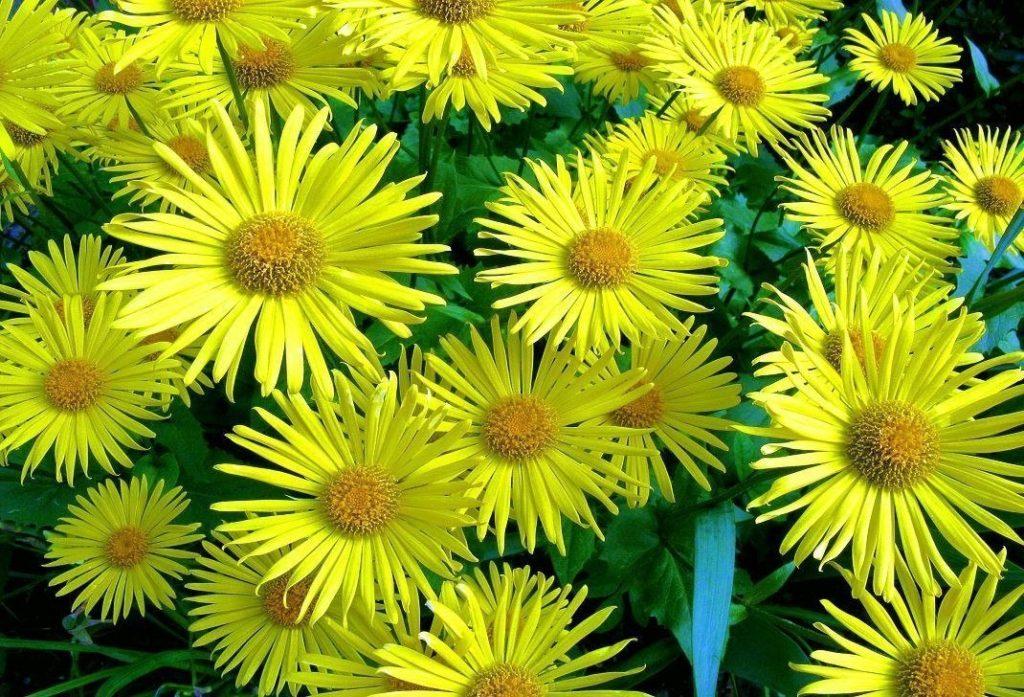
Clematis
For Siberian harsh conditions, not every type of clematis is suitable as a perennial plant. Clematis is bred especially for this region, which is considered a long-liver. With good care and strong support in one place, the plant can bloom for up to 15 years. It has a leafy dark green oval color. The flowering period begins in early July and ends in August. For cultivation, they must select a sunny site, because in the shade, burning clematis does not develop well.
Asters
For planting bush asters, an open sunny area is selected. A variety of colors (pink, white, red, purple) allows you to create flower beds only from these plants. The most popular varieties for Siberia are Dick Ballard and Beachwood Rivel, Blue Danube and Mount Everest. They bloom in August and continue to delight with colors until the first significant cold snaps.
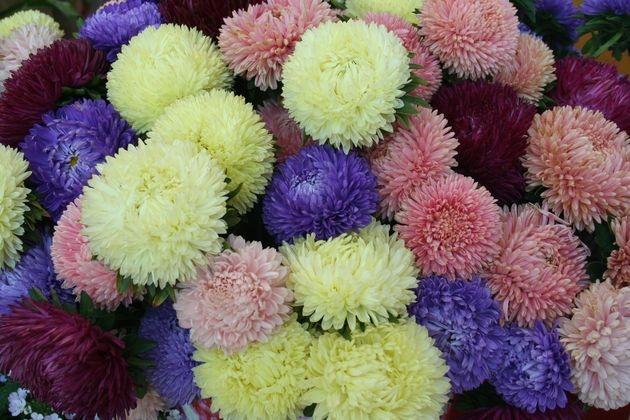
Lilies
Hybrids based on the Asiatic lily are considered suitable for the harsh Siberian regions. Such plants have a thin and straight stem, on which several peduncles are formed. The leaf plates of the culture are glossy on top, dense and narrow. In height, Asian hybrids develop from 30 centimeters to one and a half meters.
Plants can be either monochromatic or combine several shades. The most popular are: London, America, Lollipop.
Astilba
Astilbe looks like a half-shrub with straight and strong stems. They are densely covered with foliage. Plant height varies from 15 cm to 2 meters. The leaf plates have a jagged edge and a dark green bright hue. At the time of flowering, about 2-3 peduncles are formed on one stem. Inflorescences drooping, paniculate or pyramidal. The flowering period depends on the specific variety, but its duration is approximately the same for all - no more than 35 days. For cultivation, a place is selected in the shade, since astilba does not tolerate open sunlight.
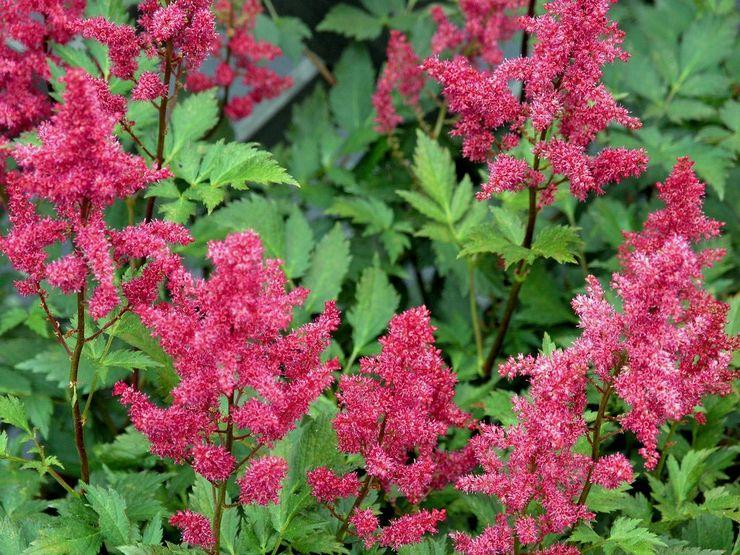
Anemone (anemone)
Herbaceous plant, not exceeding 35 cm in height. The stems of the anemone are thin, have a brown color. Deciduous rosettes are located along their entire length. The leaf plates have a carved edge, a light green tint and an elongated shape. The shade of the inflorescences is white, pink, red, blue - this parameter depends on the selected variety. The most popular representatives are Blue Shades, Admiral, Pink Star.
Care advice
The peculiarities of the climate of the north of Russia leave their mark on the conduct of agrotechnical measures:
- Irrigation is carried out not often, trying not to flood the plants.
- Bush varieties are planted periodically to avoid chopping flowers.
- Bulbous plants are prepared for wintering more carefully than those with a root system.
- Be sure to make top dressing, guided by the instructions for the composition.
If all the rules of care are followed, even in such a harsh region as Siberia, it will be possible to grow beautiful and fragrant flowers that adorn the site for more than one year.
